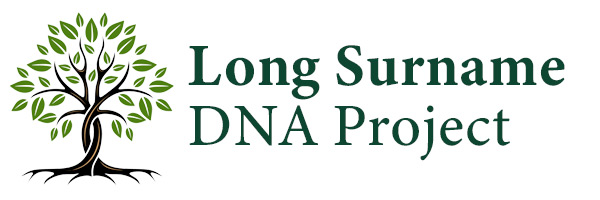Irish Catholic Longs
Updated February 9, 2018
Contact webmaster: Rosemary at mcnerneywinkler dot com
 ong, an anglicized version of the name Ó Longaidh, belongs to one of the oldest branches of the Eóghancht royal dynasty of Ireland’s Munster Province. Prince Longaidh, patriarch of the sept living in about 640, was a descendant of Oengus Mac Nad Fróich, the first Christian king of Munster in the 400s who was said to have been baptized by Ss. Patrick and Ailbe on the Rock of Cashel. Early genealogical heritage survives in a poem attributed to the seventh century entitled Duan Cathain, preserved in An Leabhar Muimhneach. By the time of the Norman invasion in 1066, this Catholic clan was well established in its present territory in the Barony of Muskerry, County Cork, parishes of Canovee, Moviddy, Kilbonane, Kilmurry, and Dunisky straddling the River Lee.
ong, an anglicized version of the name Ó Longaidh, belongs to one of the oldest branches of the Eóghancht royal dynasty of Ireland’s Munster Province. Prince Longaidh, patriarch of the sept living in about 640, was a descendant of Oengus Mac Nad Fróich, the first Christian king of Munster in the 400s who was said to have been baptized by Ss. Patrick and Ailbe on the Rock of Cashel. Early genealogical heritage survives in a poem attributed to the seventh century entitled Duan Cathain, preserved in An Leabhar Muimhneach. By the time of the Norman invasion in 1066, this Catholic clan was well established in its present territory in the Barony of Muskerry, County Cork, parishes of Canovee, Moviddy, Kilbonane, Kilmurry, and Dunisky straddling the River Lee.
The O’Long clan chiefs, like all Gaelic chiefs of Munster, resisted the Elizabethan conquests. Numerous members of the family received pardons in 1602-03 in the wake of the Irish defeat at Kinsale, surrendering title and land to live in feudal conditions. They again participated with other clan chiefs in the rising of 1649-51, but were ruthlessly crushed by the English under Cromwell. Longs and other “rebels” were executed and their estates confiscated.
Mountlong, in the parish of Kilmonoge east of Kinsale, was the seat of another distinguished and rebellious branch of the family with land holdings. In 1690, two of these Longs were outlawed for supporting King James II during the Glorious Revolution, and all their lands confiscated.
At the time of the restoration in 1660, a Long held the ancestral home bearing the name Garranelongy or Grove of the Longs. With William of England’s conquest in the late 1600s, the oppressive Irish Penal Laws were established. These laws covered virtually every aspect of life in Ireland for the vast majority of the population, making Irish Catholics strangers in their own land, prohibiting them from practicing their religion, receiving a Catholic education, entering a profession, holding public office, engaging in trade or commerce, buying or leasing land, voting, and so on. When Gaelic gentry began to decline under these laws, heirs to many of the chiefly houses drifted into exile in Europe. But the O’Longs remained in the Garranelongy townland and surrounding area under reduced circumstances, enduring and surviving quietly. Their only genuflection to the new order was the excising of the “O” from their name. They kept their Catholic faith which meant they could not own lands, and a member of the family converted to the Anglican faith in order to maintain them. The Longs were still acknowledged as members of the Gaelic nobility of Muskerry.
 ith the easing of Penal Laws in 1829 due to pressures on England from the American and French Revolutions, life began to change for Irish Catholics including the Long gentry who regained title to their homeland at Garranelongy. Like other Irish Catholics, with emancipation they were now able to follow careers of their choosing, enter the professions, and enjoy freedoms previously denied them.
ith the easing of Penal Laws in 1829 due to pressures on England from the American and French Revolutions, life began to change for Irish Catholics including the Long gentry who regained title to their homeland at Garranelongy. Like other Irish Catholics, with emancipation they were now able to follow careers of their choosing, enter the professions, and enjoy freedoms previously denied them.
Sources: Denis C. Long, the O’Long of Garranelongy; Jack Lane, Irish historian and author; Erin’s Blood Royal by Peter Berresford Ellis published in the Constable-London; Names of County Cork by Diarmuid Ó Murchada; Gera Burton, University of Missouri-Columbia; The Glencorbry Chronicle, Volume 1, No. 1, published by the Glin Historical Society, March, 1997; Vanishing Kingdoms, The Irish Chiefs and their Families, by Walter J.P. Curley, The Lilliput Press, Dublin, 2004; Chief Herald of Ireland. Paraphrased, adapted, and prepared October, 2004, and revised in June, 2013, by Rosemary McNerney Winkler
Source: https://web.archive.org/web/20191227210933/http://www.mcnerneywinkler.com/Irish%20Catholic%20Longs.html
